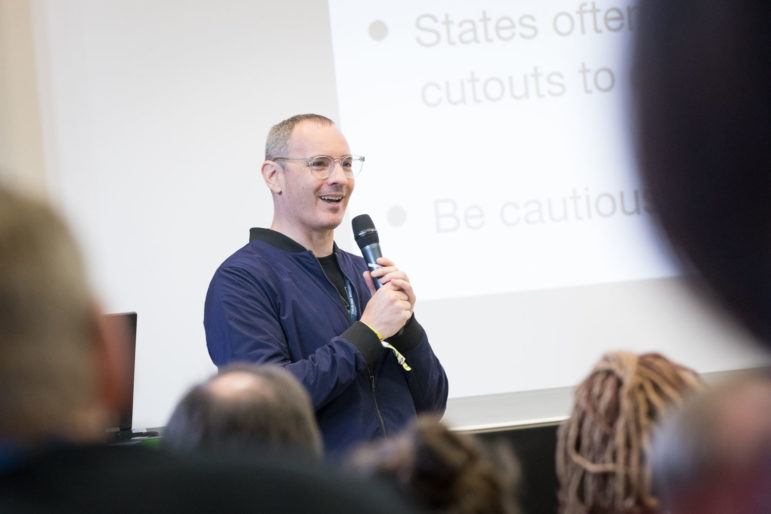How To Be a Media Literate Citizen: “The Role of Researchers, Journalists, and Students in the World of Heightened Disinformation, Conspiracy Theories, and Hate.” PHOTO CREDIT: Global Investigative Journalism Network
Misinformation and disinformation are not new issues, but in an increasingly connected world, disinformation is a rapidly growing industry.
Craig Silverman, a reporter for ProPublica and a former media editor at BuzzFeed, spoke about how misinformation and disinformation are spread and how people can combat them today. He was the keynote speaker for “How to be Media Literate Citizens: The Role of Researchers, Journalists, and Students in the World of Heightened Disinformation, Conspiracy Theories, and Hate,” an event hosted by the Harrington School of Communication and Media on Tuesday, March 22.
According to Silverman, there are many forms of false or misleading content, which is why he uses terms like misinformation and disinformation instead of “fake news.” Misinformation is false information that people share without checking it or knowing that it is false and disinformation is false information that is deliberately created and spread to mislead.
In 2019, Silverman reported a story on people renting their Facebook accounts to companies that used those accounts to spread ads that were often scams.
“When people clicked on the ad they were sent to a website which they would then sign up for what they thought was a free trial of the product,” he said. “But it turned out they were signing up for a very expensive subscription, which is where the scam comes in.”
Just a few months later, Russia began renting Facebook accounts in March 2019 to spread propaganda and ads to influence the then-upcoming Ukrainian presidential election, according to Silverman.
He said that since the start of the war between Russia and Ukraine, Russia has continued this manipulation in different ways. A video posted on Telegram, a popular messaging platform in Russia, supposedly debunked a video that claimed to show a Ukrainian supermarket that was bombed. According to the post, the video was actually from a fire in 2021, not from the current war.
“But the crazy thing about it was the false video that was supposedly circulated by people in Ukraine didn’t actually exist,” Silverman said. “This was an example of a fake fact-checking video, a fake debunking video, where we don’t know who is behind them, but we do know what is being done. It was targeted at a Russian-speaking audience so that they would basically doubt and question all of the claims they see coming out of Ukraine.”
This is just one new aspect of an innovative and growing “disinformation and trolling for-hire industry.” Falsehoods are now able to spread around the world faster than ever due to the fast communication that network media has facilitated, according to him.
Silverman offered three tips to identify and combat misinformation. First, according to him, many people think they have little influence on what is shared on social media, but what people like and share informs what others are shown on those platforms. Because of this, it is important to take responsibility for what you are sharing and to embrace your power as a consumer.
Secondly, Silverman said that disinformation feeds off of polarization and human biases, which is why we should ask questions and seek more sources to counteract innate and emotional responses. When consuming media, he said that people should ask what the claim is, where the information is coming from, are there similar claims from other sources, is there contradictory or similar information elsewhere and what are the sources of that information.
Finally, he urged the audience to be patient when looking for reliable information.
“If you’re patient, if you ask questions, and if you understand your power, your responsibility, then you can really help navigate a very chaotic, confusing information environment, and be a much more literary consumer and citizen,” Silverman said.

